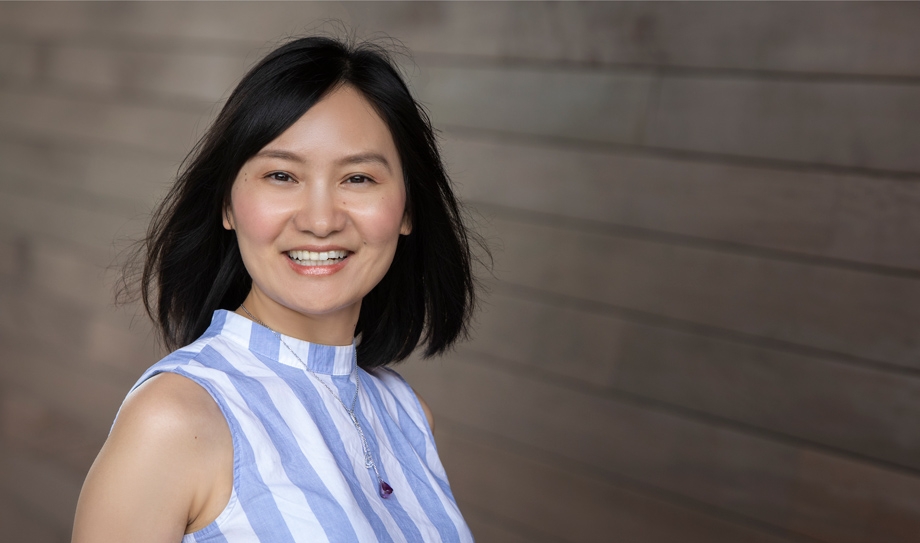Pacemakers and other implantable devices that restore normal heart rhythms have saved millions of lives. In some patients, a pacemaker or implantable cardioverter defibrillator modified for "cardiac resynchronization therapy," or CRT, can dramatically improve heart failure by synchronizing the heart's pumping function. Unfortunately, many people don't respond to CRT and of those who do, some don't realize its full potential— including increased exercise capacity and staying out of the hospital. CRT can save or change many more lives, says Miaomiao Zhang, an assistant professor at the University of Virginia School of Engineering and Applied Science. She hopes to greatly improve CRT outcomes through a new project, "Deep Learning to Automate Late Mechanical Activation Detection from Cardiac Magnetic Resonance Images," for which she has received a Trailblazer R21 Award from the National Institute of Biomedical Imaging and Bioengineering.

In a healthy heart, synchronized electrical signals stimulate the chambers to contract simultaneously. “Late mechanical activation” means the contraction of one or more chambers is delayed relative to the others as the heart muscle goes through the cardiac cycle.
Cardiac resynchronization therapy, or CRT, is used to send electrical impulses via electrodes to affected sites, telling them when to fire. Improper placement of the electrodes is a significant contributing factor to the failure of CRT, said Zhang, who holds joint appointments in the Charles L. Brown Department of Electrical and Computer Engineering and the Department of Computer Science.
The goal of Zhang’s research is to help cardiologists rapidly and accurately identify the location of cardiac abnormalities and guide the placement of the CRT electrodes. To accomplish this, she plans to develop advanced machine learning and artificial intelligence techniques to analyze cine magnetic resonance imaging, an MRI procedure that visualizes the heart muscle in action.
And that’s where her collaborators — Frederick Epstein, UVA’s Mac Wade Professor of Biomedical Engineering and professor of radiology and medical imaging, and UVA Health cardiologist Kenneth Bilchick — come in.
Zhang will use a unique dataset from more than 200 of Bilchick’s patients who were treated with CRT at UVA Health to train her algorithms. The anonymized patient data includes demographics, other health risks, and cine DENSE MRIs, which are cine MRIs acquired with enhanced technology called “displacement encoding using stimulated echoes.” This imaging is done before the CRT implant and for several years after to assess outcomes.
Cine DENSE MRIs are much more accurate than standard cine MRIs in measuring the heart’s function. Epstein and his research group at UVA have been at the forefront of developing cine dense MRI over the past two decades.
Bilchick routinely uses the imaging technique not only to correctly place CRT electrodes for best results but to help determine whether CRT is likely to benefit the patient.
Using UVA’s dataset to train her algorithms how to identify abnormalities from standard MRIs, Zhang hopes to effectively automate MRI analysis.
The research could be an equalizer, Zhang said.
“Not every clinical center has a DENSE MRI facility, and not every patient can tolerate a prolonged MRI procedure,” she said. “We think we can achieve the same accuracy using the standard MRI technology without DENSE that is available in clinical sites worldwide.”
The National Institutes of Health Trailblazer Award will provide the project $660,000 over three years using an enhanced provision of the R21, the NIH’s program for exploratory or developmental research. The Trailblazer designation is for “NIH-defined New and Early-Stage Investigators.” Zhang’s research team received a seed grant from UVA’s Center for Engineering in Medicine to develop preliminary data for the R21 proposal.
Zhang also received a National Science Foundation CAREER Award this year — another prestigious honor for early-career faculty, which recognizes potential for leadership in research and education.
Zhang earned her Ph.D. in computer science at the University of Utah in 2016 and was a postdoctoral associate in the Computer Science and Artificial Intelligence Laboratory at the Massachusetts Institute of Technology. In 2014, she won a Young Scientist Award from the Medical Image Computing and Computer Assisted Intervention Society, in which she is active as a member and an area chair.
The combination of her specialized training and outstanding advances in machine learning theory is unique, said Scott Acton, a UVA professor and chair of the electrical and computer engineering department.
“Not every engineer can communicate effectively with medical researchers and advance the state of the art in engineering and computer science at the same time,” Acton said. “Professor Zhang is the rare research glue and stimulant that can make a significant impact in medicine.”
That potential for impact drew Zhang to UVA Engineering, which offers strong research in machine learning, image processing and biomedical imaging as well as proximity to UVA’s world-class School of Medicine. Here, she and physicians like Bilchick can collaborate to continuously design, test and validate AI algorithms in real clinical settings.
“AI is exploding everywhere in our daily lives,” Zhang said. “But there are still a lot of challenges to using AI in real-world applications such as health care. To bridge between machine learning AI and clinical medicine is exciting and rewarding. It’s important to me that my work can make a difference for people.”